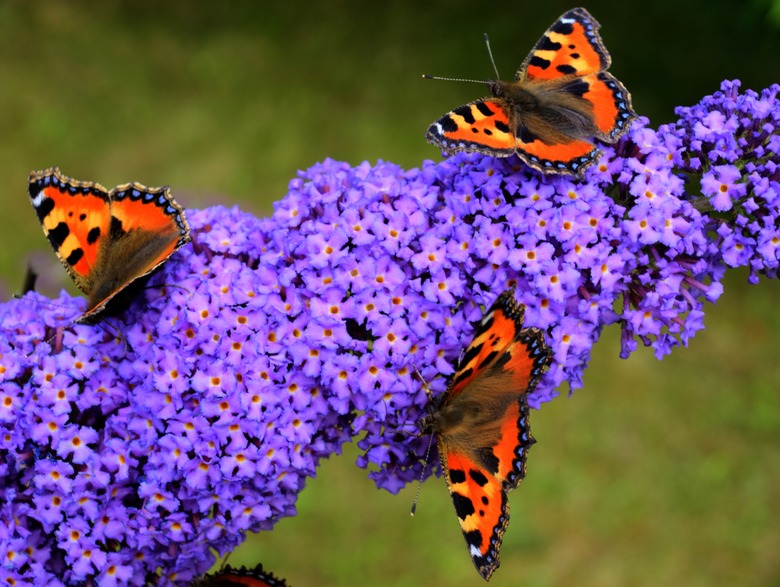Is The Butterfly Plant Poisonous To Animals Or Humans?
We may receive a commission on purchases made from links.
The butterfly bush (Buddleja davidii) attracts butterflies to its bright wands of flowers, but its easy-growing ways and lovely blossoms come with a price. These flowers are not known to be toxic to humans or animals, but the plant is extremely invasive.
Meet the Butterfly Bush
Meet the Butterfly Bush
The butterfly bush, also known as summer lilac, is popular with gardeners. It is beloved for its fast growth and generous load of purple, pink, or white flowers that appear in wands at the branch tips. This deciduous shrub blooms from summer through fall without stopping, filling the garden with a honey-sweet fragrance. It can grow between 3 and 15 feet in one season.
Native to Asia, the butterfly bush was brought to this country as an ornamental, and its flowers are quite stunning. Though each individual blossom is small, they grow in dense clusters on branch tips and are so heavy that they bend the branches into graceful arches.
As is suggested by the common name, the flowers of the butterfly bush attract butterflies. The nectar-rich flowers also appeal to hummingbirds and other pollinators. Neither the flowers nor any other parts of the plant are classified as toxic to animals or humans.
Grow a Butterfly Bush
Grow a Butterfly Bush
Butterfly bushes thrive in a wide range of hardiness zones, from U.S. Department of Agriculture plant hardiness zone 5 to zone 10. Their long, arching branches are covered with gray-green leaves all year long in warmer zones, but the leaves fall in winter in cooler regions.
The shrub is also very tolerant of soil texture and grows in anything from sand to clay. It does best in a sunny location that gets at least six hours of direct rays, but it can live with less. Although the butterfly bush does best when planted in well-drained soil with regular irrigation, it will also accept dry soil and even wet soil.
Beware of the Butterfly Bush
Beware of the Butterfly Bush
There is a downside to this excellent summer-flowering shrub. It is extremely invasive, escaping cultivation and invading wild, natural areas in almost half of the states. This is due in part to its tolerance of many different climates and environments. In addition, the flowers produce abundant amounts of small seeds that are quickly dispersed by wind and water.
Once the butterfly bush moves into wild areas, its rapid growth easily outperforms native vegetation. The shrub crowds out native plants that usually provide food and shelter for butterflies, birds, and other wildlife. In many states, it is classified as a weed. Sterile cultivars are available and are required in some states.
